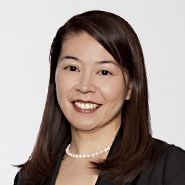Ex parte Viviano
- June 17, 2011
- Blog Post
Associated People
An apparent win falls short when the Board decides that your claims are nonetheless unpatentable for reasons that differ from the reasons that the Examiner originally rejected the claims. In ex parte Viviano (Appeal 2010-001424; decided June 15, 2011), the Board initially held that the Examiner failed to meet the required burden of establishing obviousness but then turned around and concluded that the claim was obvious anyway in view of the same art applied by the Examiner.
The invention at issue is a prefabricated self-aligning 3-D support. The first limitation that was considered by the Board in their analysis was the phrase “sheet goods.” There was some dispute as to what the meaning of this phrase means because the Examiner interpreted that to be inclusive of the conventional stick framing in the prior art of Simmons and the Appellants argued that such conventional art was excluded. Even though the Board did not conclude which was correct because the specification was deficient in identifying a clear definition, the Board nonetheless held that the Examiner’s interpretation that Simmons taught “broad, relatively thin members” was not supported by substantial evidence citing In re Warner, 379 F.2d 1011, 1016-17 (CCPA 1967) (the examiner has the initial duty of supplying the requisite factual basis and may not, because of doubts that the invention is patentable, resort to speculation, unfounded assumptions, or hindsight reconstruction to supply deficiencies in the factual basis).
While that was certainly good news to Viviano, the Board then turned to dependent Claim 9 which required that the truss members are made of plywood. As plywood was a known material and that a skilled artisan would have selected plywood as a material to build the truss members, the Examiner concluded that the subject matter of Claim 9 would have been obvious. The only argument apparently put forth by the Appellants was that the Examiner’s conclusion was simply a conclusion, not supported by evidence. However, the Board held that the prior art need not teach or suggest the use of plywood as it was known and could be used because there is nothing “unpredictable or unexpected” that would present a “unique challenge to one of ordinary skill in the using plywood to fabricate structures such as trusses for a porch.”
The Board then went back to consider the patentability of Claim 1 “[b]ecause a dependent claim includes all of the limitations of the claim from which it depends, the Examiner’s conclusion that claim 9 is obvious is also a conclusion that claim 1 is obvious for the same reasons.” The Board further found that “In view of the level of ordinary skill in the art, which would include a familiarity of common building materials and their advantages, it would have been obvious to select a sheet good such as plywood as the particular building material . . .”citing, KSR and Perfect Web Tech., Inc. v InfoUSA, Inc., 587 F.3d 1324, 1329 (Fed. Cir. 2009) (“while an analysis of obviousness always depends on evidence . . . it also may include recourse to logic, judgment, and common sense available to the person of ordinary skill that do not necessarily require explication in any reference”).










 Counseling & Strategic Advice
Counseling & Strategic Advice IP Transactions
IP Transactions Litigation
Litigation PTAB Proceedings
PTAB Proceedings Start-Up
Start-Up Technology Transfer
Technology Transfer Trademark & Designs
Trademark & Designs U.S. Patent Procurement (Application Drafting & Prosecution)
U.S. Patent Procurement (Application Drafting & Prosecution)








